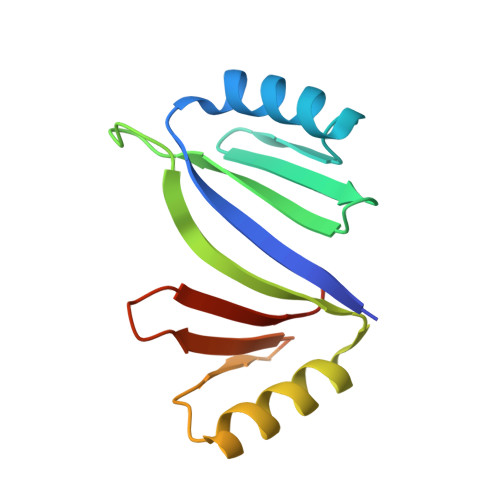The ArsI C-As lyase: Elucidating the catalytic mechanism of degradation of organoarsenicals.
Nadar, V.S., Kandavelu, P., Sankaran, B., Rosen, B.P., Yoshinaga, M.(2022) J Inorg Biochem 232: 111836-111836
- PubMed: 35487149
- DOI: https://doi.org/10.1016/j.jinorgbio.2022.111836
- Primary Citation of Related Structures:
6XA0, 6XCK - PubMed Abstract:
Organoarsenicals such as monosodium methylarsenate (MSMA or MAs(V)) and roxarsone (4-hydroxyl-3-nitrophenylarsenate or Rox(V)) have been extensively used as herbicides and growth enhancers for poultry, respectively. Degradation of organoarsenicals to inorganic arsenite (As(III)) contaminates crops and drinking water. One such process is catalyzed by the bacterial enzyme ArsI, whose gene is found in many soil bacteria. ArsI is a non-heme ferrous iron (Fe(II))-dependent dioxygenase that catalyzes oxygen-dependent cleavage of the carbon‑arsenic (C-As) bond in trivalent organoarsenicals, degrading them to inorganic As(III). From previous crystal structures of ArsI, we predicted that a loop-gating mechanism controls the catalytic reaction. Understanding the catalytic mechanism of ArsI requires knowledge of the mechanisms of substrate binding and activation of dioxygen. Here we report new ArsI structures with bound Rox(III) and mutant enzymes with alteration of active site residues. Our results elucidate steps in the catalytic cycle of this novel dioxygenase and enhance understanding of the recycling of environmental organoarsenicals.
- Department of Cellular Biology and Pharmacology, Herbert Wertheim College of Medicine, Florida International University, Miami, FL 33199, USA.
Organizational Affiliation:
















